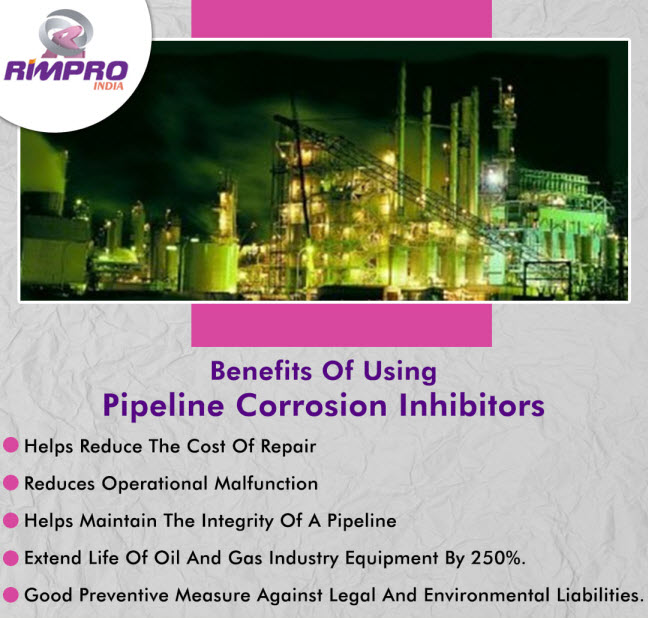 Menu
Menu
How Do Corrosion Inhibitors Work?
Corrosion occurs due to the interaction between metal surfaces and substances such as moisture, oxygen, acids, or salts. Corrosion can lead to structural weakness, decreased lifespan, and increased maintenance costs for various objects, including infrastructure, machinery, and vehicles. Corrosion inhibitors offer a solution to mitigate these detrimental effects.
Corrosion Inhibitors are chemicals used to stop the corrosion process from occurring on metals. They are very effective in reducing corrosion and also prolonging the lifespan of equipment. They are added to a variety of fluids including water, fuel, hydraulic and coolants. They can also be applied to concrete when pouring the mixture with steel rebar.
Role of Corrosion Inhibitors in Protecting Metals
Corrosive substances such as oxygen, moisture, chlorides, and other corrosive materials can easily penetrate the surface of metals. This process is known as oxidation and is the main cause of rusting and corrosion.
When a corrosion inhibitor is introduced into the metal, it forms a thin protective film that prevents oxidation. This film acts as an anodic shield that prevents electrical current from flowing through the electrolyte into the metal, thus preventing corrosion.
In addition to the oxidation process, metals are also affected by the presence of other chemical compounds such as acids and bases. These substances can be added to a water-based corrosion control solution and slow down the rate of corrosion.
Vapour Phase Inhibitors (VPI) and their Versatile Applications for Protecting Metals
Vapour phase inhibitors (VPI) change the acidity of the air to a more neutral state and prevent the formation of rust on metal surfaces. They also prevent the migration of moisture, salt, dirt and other corrosion-causing materials into the surface of the metal.

These VPIs can be used on a wide variety of metal surfaces, including pipes in fuel lines and heating systems. They are also used to protect metals during transportation and storage.
They form adsorption and precipitation films to protect the metal surface from corrosion. Adsorbed inhibitor molecules can be organic or inorganic. They have the molecular structure of a surfactant, with a hydrophilic group that can bond with the metal surface and a hydrophobic part that protrudes toward the solution bulk.
The adsorption of these molecules can also limit the diffusion of oxygen to the metal surface, which can significantly reduce the corrosion rate of the metal.
This type of inhibition is important for industrial boilers, cooling towers and heat exchangers as it can prevent scale deposits from forming on the surfaces and in the equipment. Scale can decrease the flow rates of a system and increase operating costs.
When the concentration of these chemicals is low, they can inhibit scale for long periods of time. These chemicals are based on a series of chemical reactions that prevent or delay the growth of scale deposits. They can also be designed to prevent or eliminate the accumulation of scale ions in the water supply.
These solutions can be a great option for companies that are concerned about the environment and want to minimize their impact on it. They are also easy to handle and can be applied in different concentrations.
How do Corrosion Inhibitors Work?
Corrosion inhibitors work through several mechanisms to protect metals from corrosion. The key mechanisms include:
Formation of a Protective Layer
Corrosion inhibitors form a thin, protective layer on the metal surface, acting as a barrier between the metal and the corrosive environment. This layer prevents direct contact between the metal and corrosive agents, such as oxygen or moisture, reducing the rate of corrosion.
Cathodic and Anodic Inhibition
Corrosion involves two main electrochemical reactions: anodic and cathodic reactions. Corrosion inhibitors can inhibit either the anodic or cathodic reaction, effectively slowing down the corrosion process. Cathodic inhibitors work by reducing the rate of reduction reactions, while anodic inhibitors hinder oxidation reactions.
Adsorption and Barrier Effects
Corrosion inhibitors adsorb onto the metal surface, forming a protective film. This film acts as a barrier, preventing corrosive substances from reaching the metal. Additionally, the adsorbed inhibitors can modify the metal's surface properties, making it less prone to corrosion.
Mechanisms of Corrosion Inhibition
Corrosion inhibition can occur through various mechanisms, depending on the type of inhibitor and the corrosion environment. Some common mechanisms include:
Passivation: Passivation is a mechanism where the corrosion inhibitor promotes the formation of a stable oxide layer on the metal surface. This oxide layer acts as a protective barrier against further corrosion.
Complexation: Complexation occurs when the corrosion inhibitor forms a complex with metal ions, reducing their reactivity. This process hinders the electrochemical reactions that drive corrosion.
Volatile Inhibitors: Volatile corrosion inhibitors vaporize and form a protective layer on the metal surface. These inhibitors are particularly effective in enclosed spaces or areas that are difficult to reach with other types of inhibitors.
